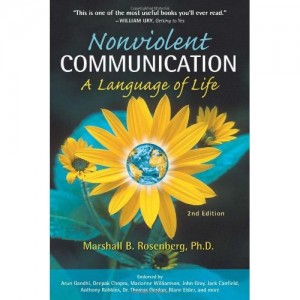Editor’s Note: This post was originally published on 6/24/2016. Through this year’s AP Month theme, “Nurturing Peace: Parenting for World Harmony,” we have been focusing on promoting peace and harmony in the home as well as around the world. This article is a great reminder that despite the many challenges violence can pose, we can still cultivate compassion and peace in our children.
API promotes parenting practices that create strong, healthy emotional bonds between children and their parents. For life.
So they can take those bonds with them into their adult lives and share them with their children. And their children can do the same.
A life cycle of compassion and connection.
Today, we are featuring resources from the National Association of School Psychologists that offer guidelines for dealing with the difficult subject of children and violence — in particular, war and terrorism.
In recent years, increasingly, there have been numerous heartbreaking mass shootings and terror activities in the United States and around the globe.
In the aftermath of such distressing incidents, many parents are wondering how to react: How much information? What and how should we communicate to our kids? And as we reflect on such painful incidents and move towards healing, another imperative question we need to ask ourselves is, What role do we play, as parents to children who will become the adults of tomorrow?
With ongoing wars, mass shootings and terrorist threats, it can be challenging to escape the display of violence from the extensive media and internet coverage — it’s a heavy dose for children to bear. While we should do our best to limit our kids’ exposure to violence, we should also acknowledge that this is the reality of the world we live in, and we need to navigate around helping children find comfort and provide them with the support they need. It is our responsibility as parents and caregivers to address our children’s emotional needs — to that end, they need us to help them understand and cope with the phenomenon of violence.
 It’s unrealistic to think that we can completely shield our kids from being exposed to incidents, such as the recent one in Orlando. Albeit, as parents, we can foster a secure environment in our homes for our children to be resilient in the face of tragedies. API promotes a secure emotional bond in the parent-child relationship — cultivating trust, a sense of security, social competence, confidence, and empathetic qualities in a child…all of which are beneficial when experiencing adversities.
It’s unrealistic to think that we can completely shield our kids from being exposed to incidents, such as the recent one in Orlando. Albeit, as parents, we can foster a secure environment in our homes for our children to be resilient in the face of tragedies. API promotes a secure emotional bond in the parent-child relationship — cultivating trust, a sense of security, social competence, confidence, and empathetic qualities in a child…all of which are beneficial when experiencing adversities.
Open communication, honesty, and trust between a parent and a child are essential ingredients for developing a strong relationship — one that is valuable when dealing with sensitive, emotional-trigger situations. This guide explores tips for parents and educators to help children cope with terrorism.
Naturally, children may feel angry and frightened in their reaction to acts of violence. To help them work through emotionally charged issues in a positive way, is it helpful to teach them compassion, empathy, and kindness in our homes and our schools.
The following are some helpful tips to consider in promoting compassion and acceptance in crisis:
- Model compassion and acceptance of differences — Children take their emotional cues from the significant adults in their lives.
- Provide useful information — Accurate information about people, events, reactions, and feelings is empowering. Use language that is developmentally appropriate for children.
- Stop any type of harassment or bullying immediately — Make it clear that such behavior, in any form (in person, online, social media) is unacceptable. Talk to the children involved about the reasons for their behavior.
- Explore children’s fears — Even children who can describe what happened may not be able to express fears, questions, or describe assumptions or conclusions they may have made. Use activities, role-playing, and discussions to explore their fears about the events and their feelings about various groups from diverse cultures or lifestyles.
- Identify “heroes” of varying backgrounds involved in response to traumatic events — These include firefighters, police officers, rescue workers, military personnel, public officials, medical workers, teachers, faith leaders, public figures, and regular citizens who work to help keep students, families, schools, and communities safe.
- Read books with your children or students that address prejudice and hate — There are many, many stories appropriate for varying age groups that can help children think about and define their feelings regarding these issues.
Parents are their children’s first and most empowering role models. Meeting our children’s needs by nurturing them with sensitivity, kindness, and compassion serves as a model for children to observe and learn how to conduct themselves in this world. We are making the most precious investment there could be: As today’s children will become tomorrow’s adults, a life cycle of compassion and connection will pave the way for a more peaceful, compassionate world for future generations.

